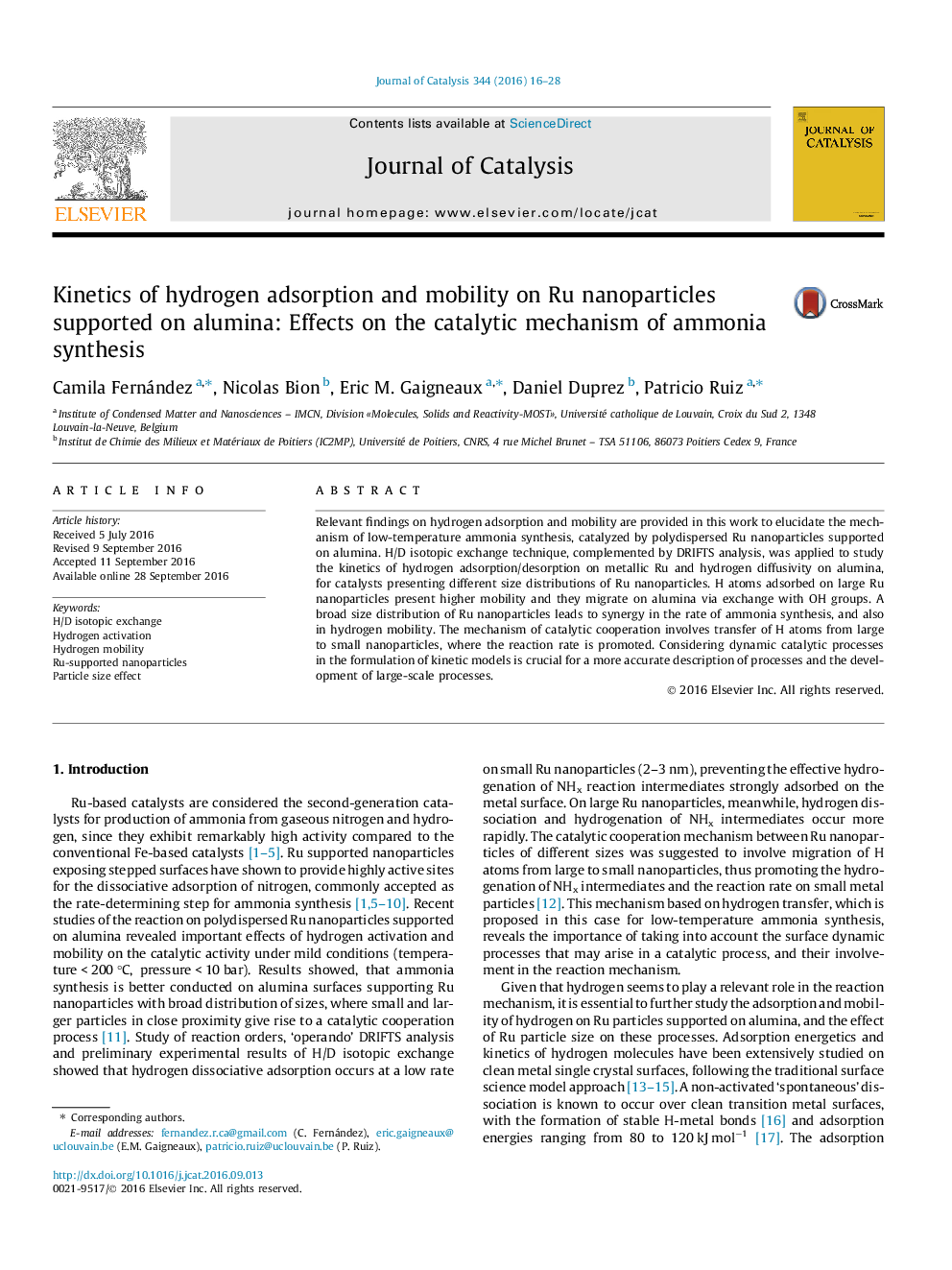| Article ID | Journal | Published Year | Pages | File Type |
|---|---|---|---|---|
| 6455741 | Journal of Catalysis | 2016 | 13 Pages |
â¢Hydrogen adsorption on large Ru nanoparticles leads to H atoms with high mobility.â¢On small Ru nanoparticles, H atoms are strongly adsorbed and present low mobility.â¢H migration to nearby Ru particles occurs via exchange with OH groups of alumina.â¢Hydrogen transfer from large to small Ru particles promotes the rate of NH3 synthesis.â¢Broad size distribution of Ru particles causes synergy in the activity and H diffusivity.
Relevant findings on hydrogen adsorption and mobility are provided in this work to elucidate the mechanism of low-temperature ammonia synthesis, catalyzed by polydispersed Ru nanoparticles supported on alumina. H/D isotopic exchange technique, complemented by DRIFTS analysis, was applied to study the kinetics of hydrogen adsorption/desorption on metallic Ru and hydrogen diffusivity on alumina, for catalysts presenting different size distributions of Ru nanoparticles. H atoms adsorbed on large Ru nanoparticles present higher mobility and they migrate on alumina via exchange with OH groups. A broad size distribution of Ru nanoparticles leads to synergy in the rate of ammonia synthesis, and also in hydrogen mobility. The mechanism of catalytic cooperation involves transfer of H atoms from large to small nanoparticles, where the reaction rate is promoted. Considering dynamic catalytic processes in the formulation of kinetic models is crucial for a more accurate description of processes and the development of large-scale processes.
Graphical abstractDownload high-res image (200KB)Download full-size image
